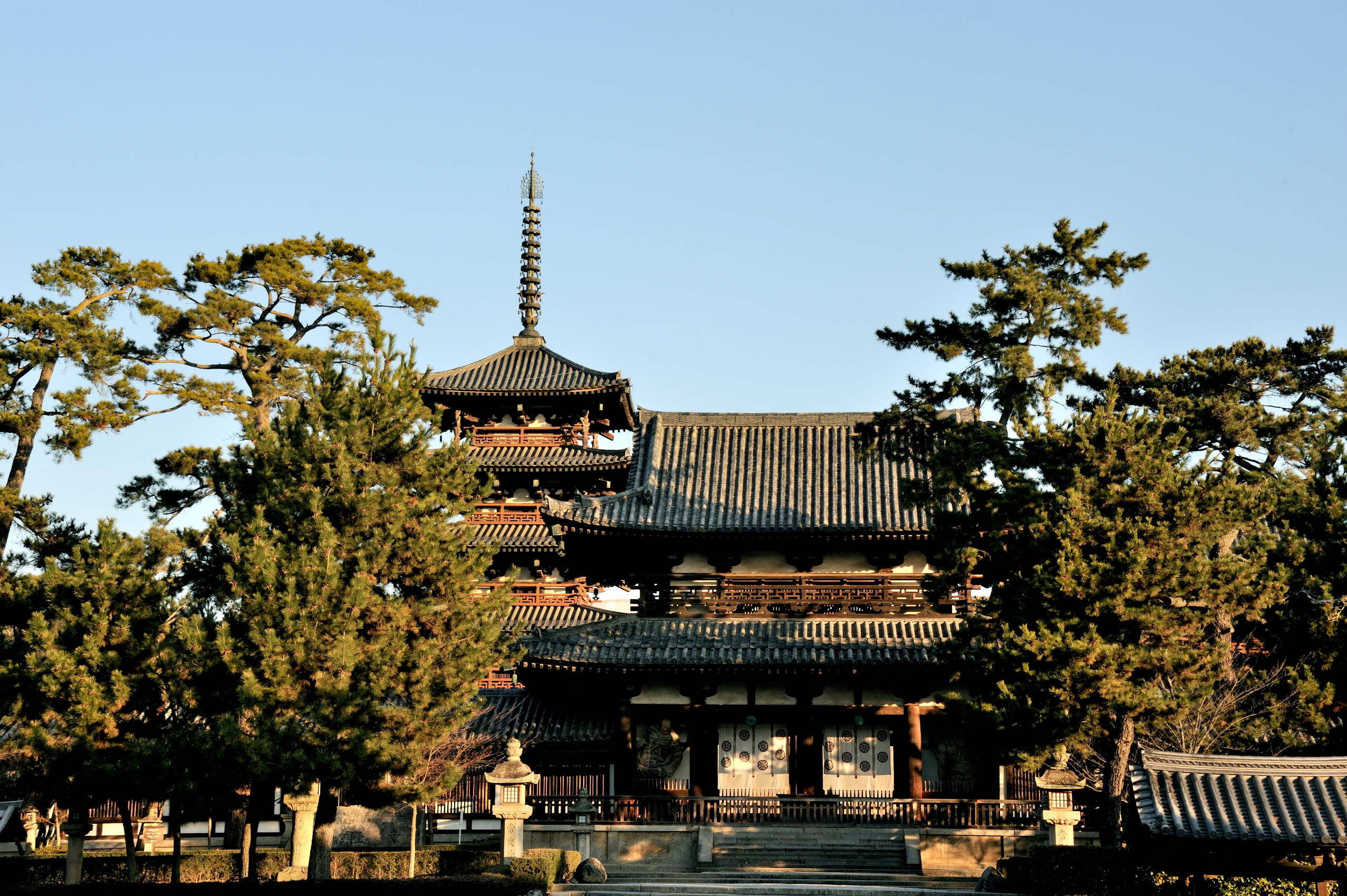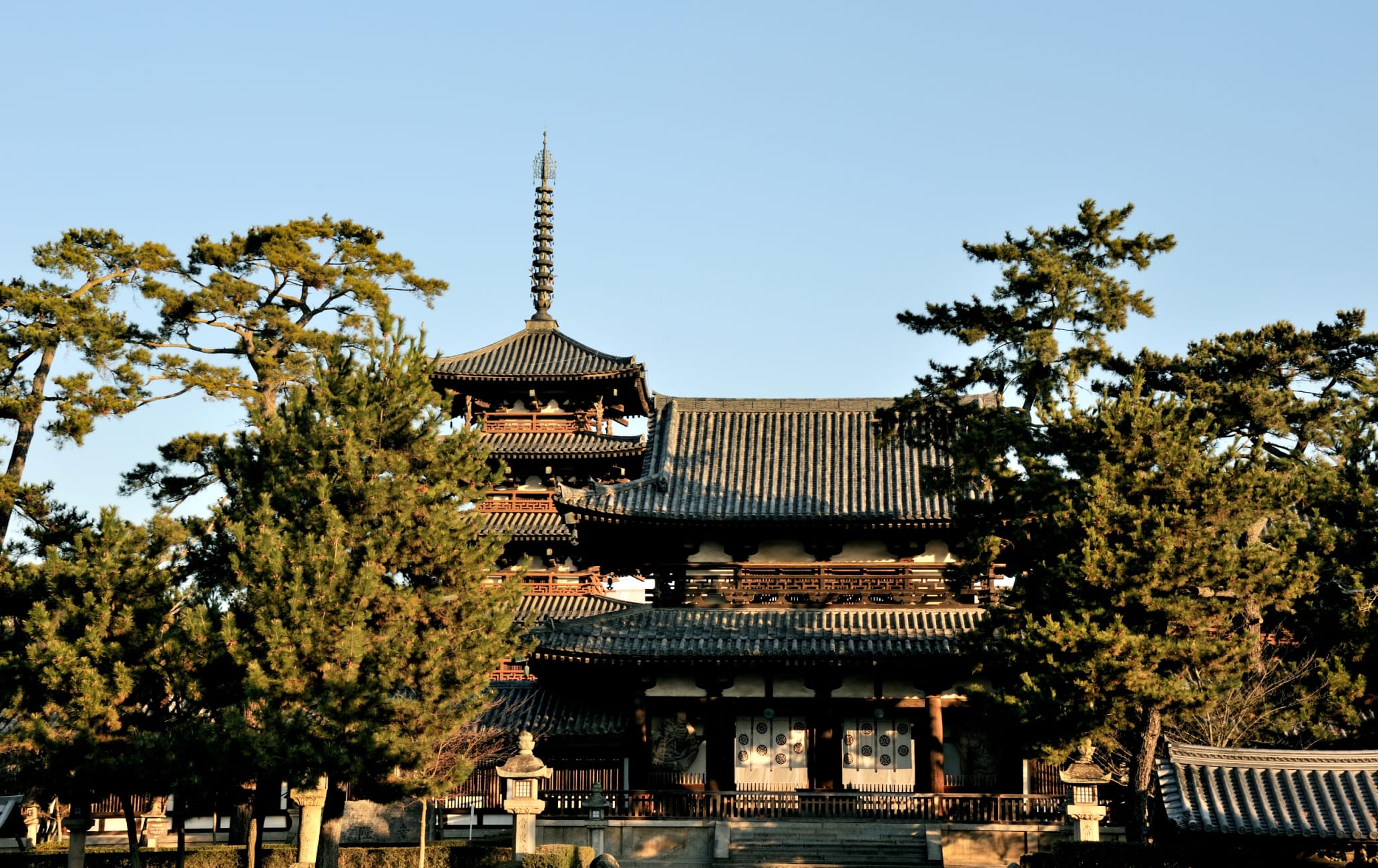A temple housing several important cultural properties and designated as Japan's first UNESCO World Heritage Site
Observing 14 centuries of history and tradition, Horyuji Temple has served as host to religious practices since as far back as 7th century Japan. Within its grounds are fantastic wooden buildings and structures conveying the visage of Japan as it was at the time, with those in the its Saiin Garan western precincts such as the Kondo hall, five-storied pagoda, central gate, and corridor being of the oldest existing wooden structures in the world.
Don't Miss
- Visit the five-storied pagoda, the world's oldest surviving wooden structure
- Explore Kondo, the temple's main building and the oldest existing wooden building in the world
- Observe approximately 2,500 important cultural properties and buildings safe kept on the temple grounds
How to Get There
From JR Osaka Station, take the Yamatoji Line on the Osaka Loop Line and get off at JR Horyuji Station. It's a 20-minute walk from the station. Alternatively, take a bus bound for Horyu-ji Sando and get off at the Horyu-ji Sando stop.
From JR Kyoto Station, take the Nara Line on the Yamatoji Line and get off at JR Horyuji Station. From the station, you can get to Horyuji Temple on foot or by bus.
From Kintetsu Kyoto Station, take the Kintetsu Kyoto/Kashihara Line and get off at Kintetsu Tsutsui Station. Then, take a bus bound for JR Oji Station and get off at the Horyuji-mae stop.
Quick Facts
Horyuji Temple's grounds span some 187,000 square meters
It has 55 buildings that have been designated as National Treasures or Important Cultural Properties
Japan's first temple to be designated a World Heritage Site by UNESCO in 1993
A temple with over 1400 years of history
Horyuji Temple is said to have been founded in 607 by Empress Suiko and Prince Shotoku, then regent to the Empress and ardent advocate of Buddhism within Japan. An important figurehead in Japanese history, records suggest that Prince Shotoku promulgated “The Seventeen-Article Constitution”, Japan's first statutory law in 604. He would also dispatch envoys to Sui Dynasty China with the goals of acquiring advanced culture and systems from the mainland continent to help push Japan's progression.

Home to the world's oldest wooden building
The layout of Horyuji Temple consists of two precincts; the west precinct which is centered around the five-storied pagoda and the Kondo hall; and the east precinct, with its structures arranged around the Yumedono, the Hall of Dreams. Of all of Horyuji Temple's structures, the five-storied pagoda is the world's oldest surviving wooden pagoda. The pagoda itself is roughly 32.5 meters tall from its building foundation surface. It has a central pillar carved from a cypress tree apparently cut down in 594. The joints connecting the pillars of the pagoda are flexible, effectively helping the structure to absorb Japan's somewhat frequent seismic activity.
The Kondo hall is the oldest surviving wooden building in the world and enshrines some of the temple's most Important Cultural Properties. Elaborate paintings of the Pure Land and bodhisattvas were also once present but were damaged in a fire and removed for preservation, replaced by reproductions that can be viewed by the public.
In the east precinct, the impressive octagonal-shaped Yumedono was constructed on the site of Prince Shotoku's private palace, where he resided until his death in 622. Named after a legend that a golden Buddha appeared to Prince Shotoku in a dream, it was commissioned as a memorial to him and the contributions he made to promote Buddhism in Japan during his tenure.
All in all, Horyuji Temple contains approximately 2,500 important historical and cultural relics and structures depicting facets of Japanese history through 1400 years, including nearly 190 that have been designated as National Treasures or Important Cultural Properties. So important is the temple to the preservation of Japanese history, it was designated as a UNESCO World Heritage Site in 1993, the first temple in Japan to receive this nomination.
Stroll through Nara and its long and winding history
As a former capital of Japan, Nara itself is a wealth of Japanese history and culture. After exploring Horyuji Temple, why not stop by Nara Park? You can enjoy the naturally beautiful greenery of the park, as well as many historical and cultural heritage sites. For example, the Nara National Museum is a beautiful art museum located in Nara Park where visitors can learn about the history of Japanese Buddhism through its displays of Buddhist artworks.
Also within Nara Park stand Kofukuji Temple , another of Japan's oldest and most famous temples with over 1300 years of history, and Todaiji Temple, one of Nara's most recognizable landmarks. In March, Omizutori Festival is a sacred water-drawing festival that results in some spectacular displays said to protect observers from illness and evil.


























































